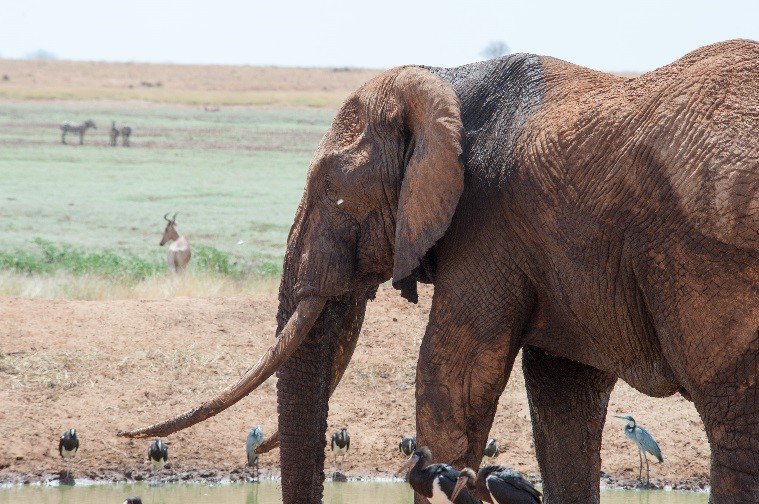
An elephant at a watering hole in Tsavo East National Park. Jessica Leas / flickr.com / CC by SA 2.0

An elephant at a watering hole in Tsavo East National Park. Jessica Leas / flickr.com / CC by SA 2.0
MODIS Vegetation Indices (VI) data products are frequently used in agricultural studies and land cover changes over time. However, researchers from Wageningen University in the Netherlands are using a Terra MODIS VI data product in a unique way to study the environmental factors related to natural elephant mortality in the Tsavo Conservation Area in Kenya.
Wato and others (2016) use 16-day, 250 meter resolution MODIS Normalized Difference Vegetation Index (NDVI) data (MOD13Q1) as a proxy measurement of food sources in the conservation area from 2004 to 2012. MODIS NDVI data are a measurement of vegetation “greenness” between -1 and 1, with a lack of green vegetation being identified with a value of less than 0.3. After the death of each elephant in the study, the authors examine the MODIS NDVI data to observe the food sources available to the elephant at the time and how they have changed over the study period.
The MODIS NDVI data are used in conjunction with elephant mortality data, maps of permanent and seasonal water sources, in-situ rain gages, and aerial elephant census data to understand how drought—at least four consecutive months with less than 150 millimeters of rainfall—impacts elephant mortality. The authors use maximum entropy modelling to understand the probability of elephant mortality.
The authors find that typically during the long wet season, between March and May, the vegetation is typically enough to sustain the elephants through part of the long dry season, which lasts from June through October. However, the availability of food sources declines during the months of September and October, as shown through a lower NDVI data measurement. Elephant mortality increases during this time and is most notable when NDVI data measurements are less than 0.3. The highest rate of elephant mortality during the study period occurred during October 2009, which correlates with the lesser amounts of rainfall during the 2009 long wet season. Decreased rainfall during the long wet season leads to insufficient food sources during the long dry season. The authors find that during times of drought, the elephants gathered near permanent water sources. However, this grouping of elephants results in a depletion of food sources around the permanent water sources, as detected by a decrease in NDVI, and ultimately leads to an increase in elephant mortality due to starvation.
The authors note that while periods of prolonged drought typically result in higher elephant mortality, this could lead to an improved resilience of the area’s dry ecosystem and could ultimately lead to a regeneration of food sources. The authors believe that allowing this ecosystem to be naturally maintained can aid in sustaining future generations of elephants. The authors also state that findings from this study, and the NDVI data used in this study, can be used in other arid and semiarid savannas where elephants live.

A Terra MODIS NDVI map of the Tsavo conservation area, as defined by the authors, in a red outline. These NDVI data measurements were recorded during the short dry season. These measurement are from 2009, which was a particularly dry year for the area.
Granule ID:
MOD13Q1.A2009049.h21v09.006.2015187062824
MOD13Q1.A2009049.h22v09.006.2015187061227
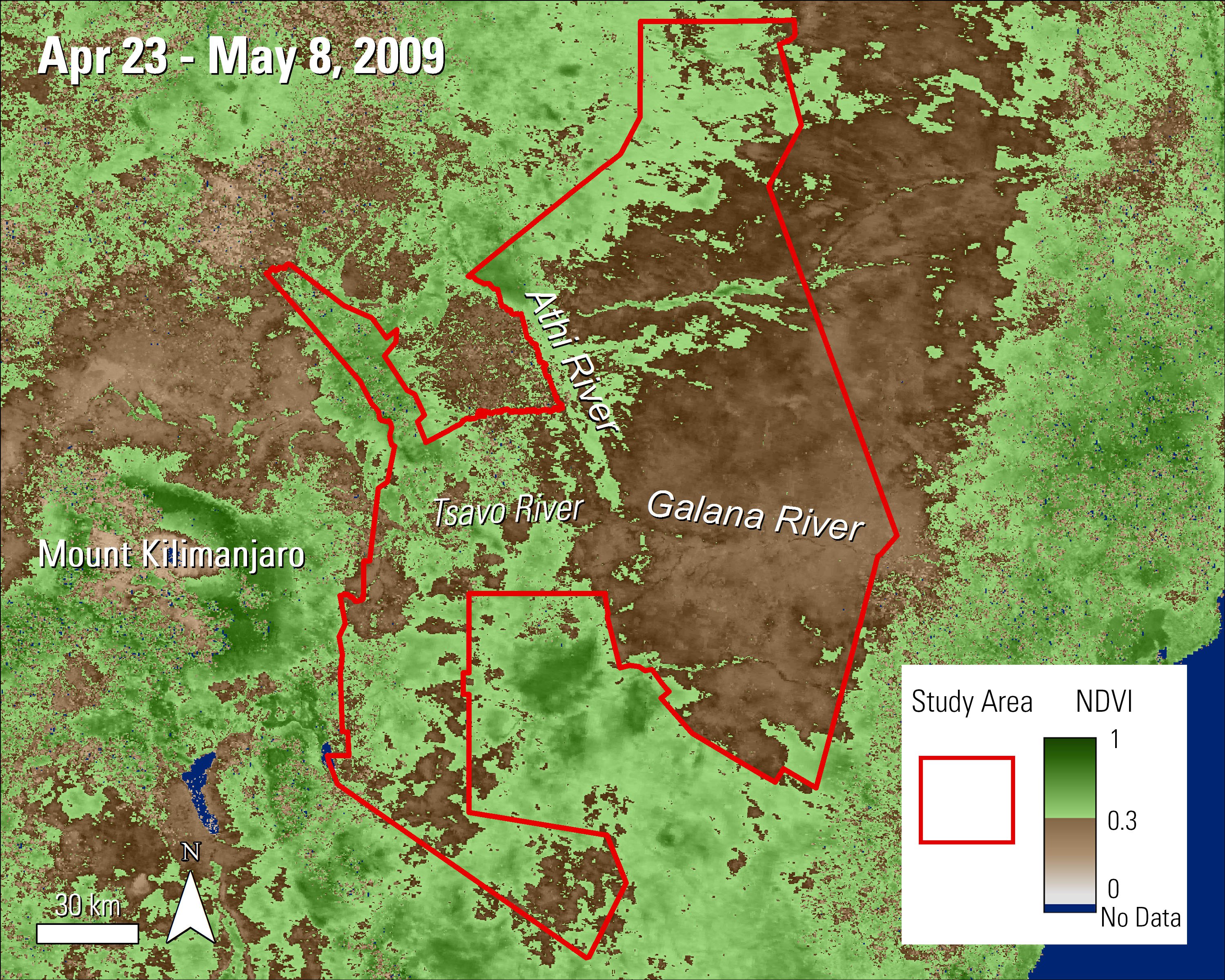
A Terra MODIS NDVI map recorded during the middle of the long wet season. Vegetation has begun to sprout near the Tsavo River. However, near the Galana River, where elephants often travel to for water, vegetation is still sparse.
Granule ID:
MOD13Q1.A2009113.h21v09.006.2015189143621
MOD13Q1.A2009113.h22v09.006.2015189135604
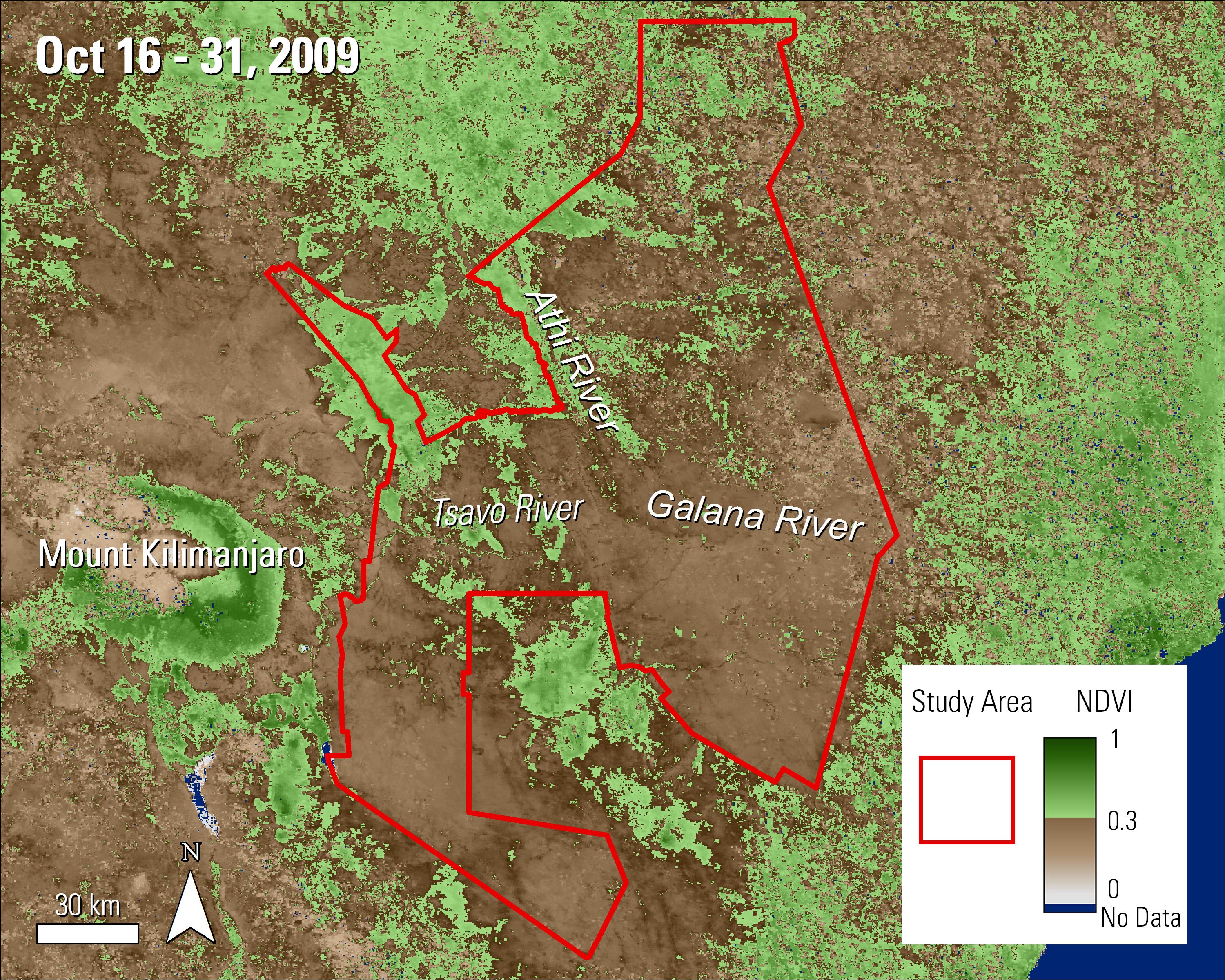
A Terra MODIS NDVI map recorded during the long dry season. A decrease in NDVI data were recorded during September and October 2009 throughout the conservation area due to a drier long wet season. This time period also saw an increase in elephant mortality.
Granule ID:
MOD13Q1.A2009289.h21v09.006.2015195224038
MOD13Q1.A2009289.h22v09.006.2015195225054

A Terra MODIS NDVI map of the Tsavo conservation area, as defined by the authors, in a red outline. These NDVI data measurements were recorded during the short dry season. These measurement are from 2009, which was a particularly dry year for the area.
Granule ID:
MOD13Q1.A2009049.h21v09.006.2015187062824
MOD13Q1.A2009049.h22v09.006.2015187061227

A Terra MODIS NDVI map recorded during the middle of the long wet season. Vegetation has begun to sprout near the Tsavo River. However, near the Galana River, where elephants often travel to for water, vegetation is still sparse.
Granule ID:
MOD13Q1.A2009113.h21v09.006.2015189143621
MOD13Q1.A2009113.h22v09.006.2015189135604

A Terra MODIS NDVI map recorded during the long dry season. A decrease in NDVI data were recorded during September and October 2009 throughout the conservation area due to a drier long wet season. This time period also saw an increase in elephant mortality.
Granule ID:
MOD13Q1.A2009289.h21v09.006.2015195224038
MOD13Q1.A2009289.h22v09.006.2015195225054
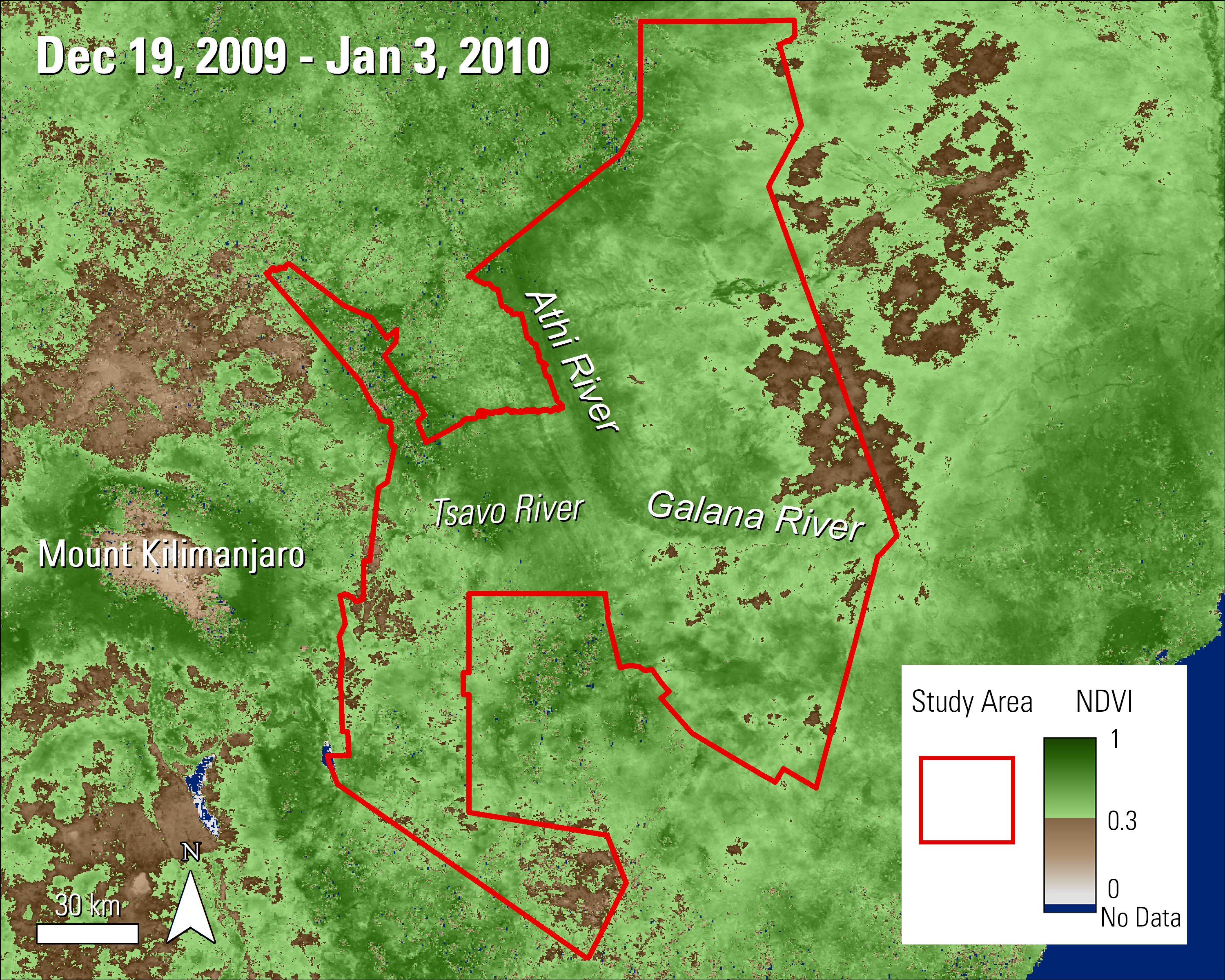
A Terra MODIS NDVI map of vegetation in the conservation area recorded towards the end of the short wet season, from November to December.
Granule ID:
MOD13Q1.A2009353.h21v09.006.2015198031459
MOD13Q1.A2009353.h22v09.006.2015198031350
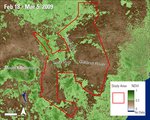
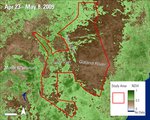
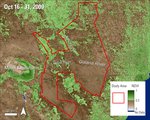
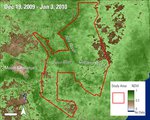
References:
Wato, Y., Heitkönig, I., van Wieren, S., Wahungu, G., Prins, H., and van Langevelde F., 2016, Prolonged drought results in starvation of African elephant (Loxodonta africana): Biological Conservation, v. 203, p. 89–96. [Also available at http://dx.doi.org/10.1016/j.biocon.2016.09.007].
Material written by Danielle Golon1
1Innovate!, Inc., contractor to the U.S. Geological Survey, Earth Resources Observation and Science (EROS) Center, Sioux Falls, South Dakota, USA. Work performed under USGS contract G15PD00403 for LP DAAC2.
2LP DAAC Work performed under NASA contract NNG14HH33I.